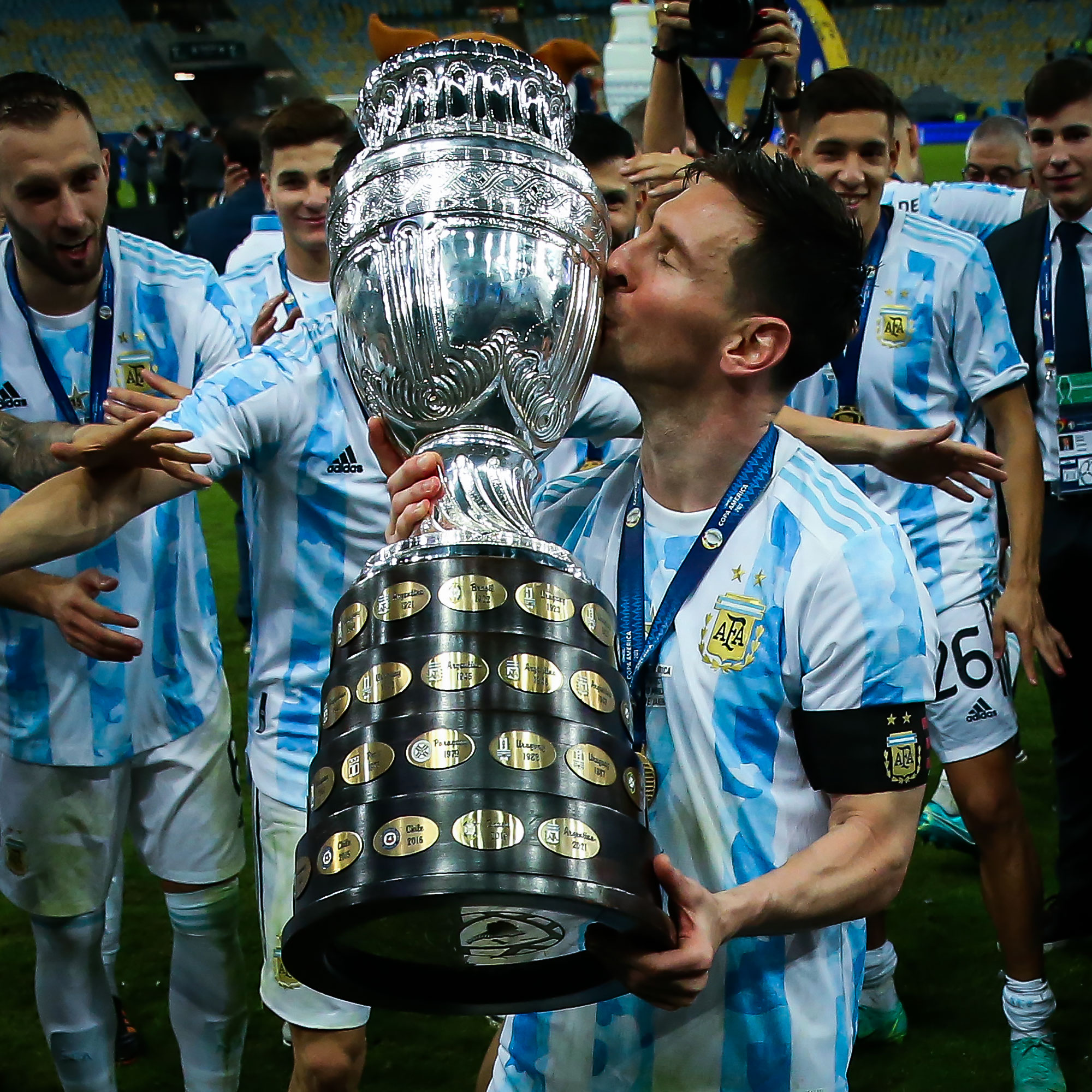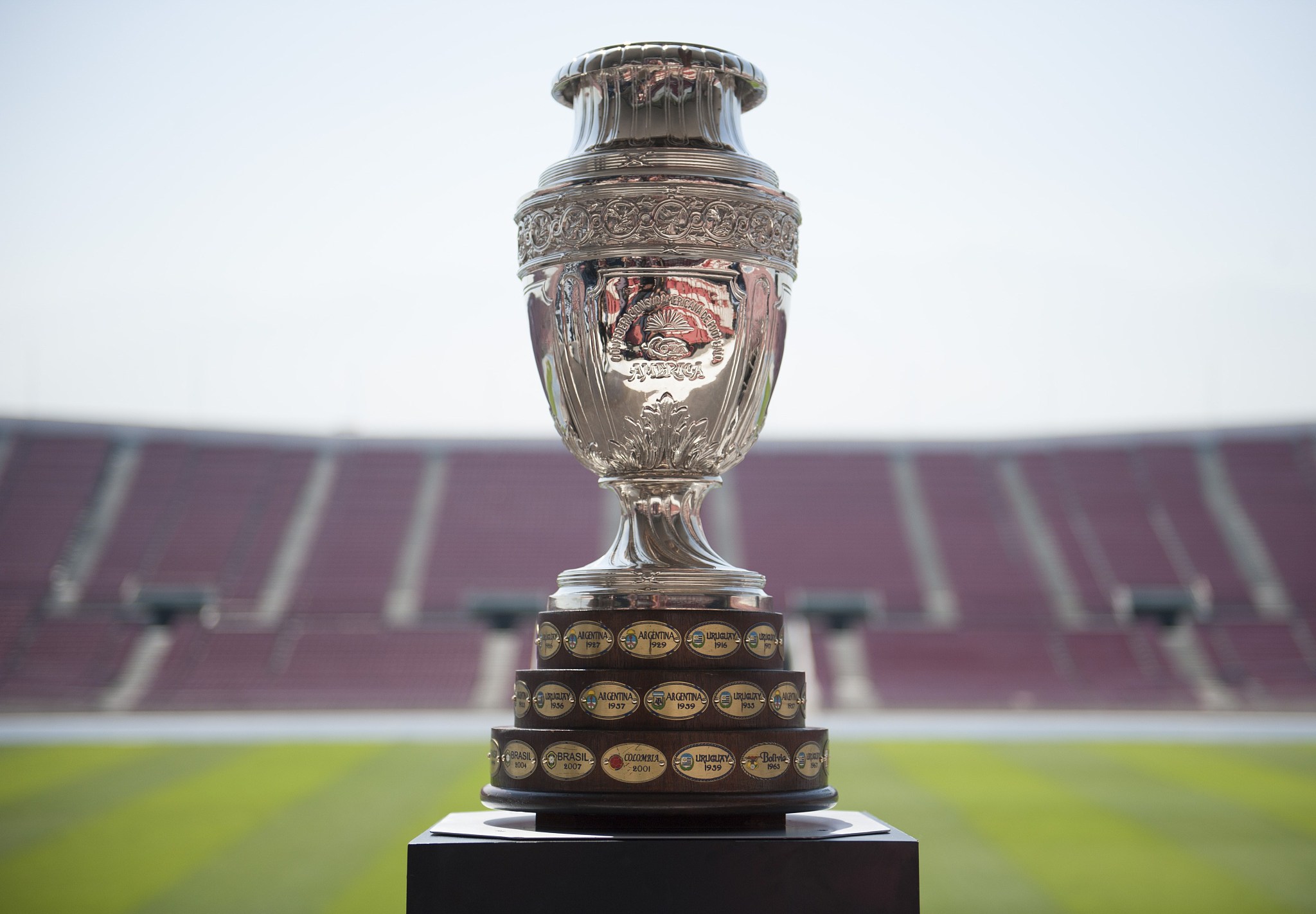Copa America Tournament History

The Copa America is the oldest continental football competition in the world, dating back to 1916. Initially known as the South American Football Championship, it was created to celebrate the 100th anniversary of Argentina’s independence. The tournament was initially contested by Argentina, Brazil, Chile, and Uruguay, with Uruguay emerging as the inaugural champions. Over the years, the Copa America has expanded to include 10 South American nations, as well as guest teams from other confederations.
The tournament has been held 47 times, with Uruguay and Argentina holding the most titles with 15 and 14 respectively. Brazil, with 9 titles, is the third most successful team in the competition’s history. The Copa America has been a major force in the development of football in South America, providing a platform for some of the world’s greatest players to showcase their skills. It has also helped to foster a sense of unity and camaraderie among the participating nations.
Participating Teams
The Copa America is contested by 10 South American nations: Argentina, Bolivia, Brazil, Chile, Colombia, Ecuador, Paraguay, Peru, Uruguay, and Venezuela. In addition, guest teams from other confederations have been invited to participate in the tournament on several occasions. These teams have included Mexico, the United States, Costa Rica, and Japan.
Matches Played and Goals Scored
Over the course of its history, the Copa America has seen a total of 1,528 matches played and 5,061 goals scored. The tournament has been dominated by a handful of teams, with Argentina, Brazil, and Uruguay accounting for over half of the goals scored.
Impact on Football Development
The Copa America has had a major impact on the development of football in South America. The tournament has provided a platform for some of the world’s greatest players to showcase their skills, and has helped to foster a sense of unity and camaraderie among the participating nations. The Copa America has also been a major source of revenue for South American football federations, and has helped to fund the development of football infrastructure in the region.
Notable Copa America Moments

The Copa America has been a stage for countless unforgettable moments, etched into the memories of fans and players alike. These moments have transcended the boundaries of the pitch, becoming part of the tournament’s rich tapestry and contributing to its enduring legacy.
From legendary players to dramatic matches and controversial incidents, the Copa America has witnessed a kaleidoscope of emotions and storylines that have captivated audiences worldwide. Let’s delve into some of the most iconic and memorable moments in the tournament’s history:
Maracanazo: Brazil’s Stunning Defeat in 1950, Copa america
The 1950 Copa America final at the iconic Maracanã Stadium in Rio de Janeiro stands as one of the most shocking upsets in football history. Hosts Brazil, brimming with confidence after a 7-1 thrashing of Sweden in the semifinals, were widely expected to triumph against Uruguay. However, in a match that became known as the “Maracanazo,” Uruguay pulled off an improbable 2-1 victory, silencing the raucous home crowd and forever leaving a scar on Brazilian football.
El Centenariazo: Uruguay’s Triumph in 1983
Thirty-three years after their Maracanazo triumph, Uruguay once again shocked the football world by winning the 1983 Copa America in controversial circumstances. The tournament was held in Uruguay to commemorate the 100th anniversary of the country’s independence. Uruguay, despite being the underdogs, defeated Brazil in the semifinals and Argentina in the final, sparking wild celebrations across the nation. However, the tournament was marred by allegations of biased officiating, particularly in the final against Argentina.
Maradona’s Hand of God and Goal of the Century
Diego Maradona, Argentina’s talismanic playmaker, etched his name into Copa America folklore with two unforgettable moments in the 1986 edition. In the quarterfinal against England, Maradona scored a controversial goal with his hand, which became known as the “Hand of God.” In the same match, he went on to score a breathtaking solo goal, dribbling past several English defenders, which was voted the “Goal of the Century” in a FIFA poll.
Ronaldo’s Redemption in 1999
Brazil’s Ronaldo, widely regarded as one of the greatest strikers of all time, experienced both triumph and heartbreak at the Copa America. In the 1999 edition, he led Brazil to the title, scoring five goals in the tournament. However, in the 2007 final against Argentina, he suffered a knee injury that threatened to end his career. Ronaldo’s return to form and subsequent victory in 1999 cemented his status as a Copa America legend.
Chile’s Bicampeonato in 2015 and 2016
Chile emerged as a force to be reckoned with in recent Copa America history, winning back-to-back titles in 2015 and 2016. Led by the likes of Alexis Sanchez and Arturo Vidal, Chile defeated Argentina on penalties in both finals, establishing themselves as one of the strongest teams in South American football.
Copa America’s Influence on Football Culture

The Copa America has had a profound impact on football culture in South America and around the world. The tournament has helped to shape the way that football is played and enjoyed in the region, and it has also played a role in promoting national pride and fostering rivalries.
The Copa America has been a showcase for some of the greatest football talent in the world. Players like Pelé, Diego Maradona, and Lionel Messi have all starred in the tournament, and their performances have helped to inspire generations of young footballers. The tournament has also helped to develop the tactical and strategic aspects of football. The high level of competition has forced teams to innovate and adapt, and the tournament has been a testing ground for new ideas and formations.
National Pride and Rivalry
The Copa America is a source of great national pride for the countries that participate in it. Fans from all over the region come together to cheer on their teams, and the tournament is often a time of great celebration. The rivalries between the different countries are also fierce, and the matches are often played with great intensity.
Football Tactics and Strategies
The Copa America has had a significant impact on the development of football tactics and strategies. The high level of competition has forced teams to innovate and adapt, and the tournament has been a testing ground for new ideas and formations. The Copa America has also helped to popularize certain styles of play, such as the Brazilian style of “jogo bonito” (beautiful game).
Player Development
The Copa America is a great opportunity for young players to showcase their talent. The tournament provides a platform for players to compete against the best in the region, and it can be a springboard to a successful career in Europe. The Copa America has also helped to develop the skills of some of the greatest players in the world, such as Pelé, Diego Maradona, and Lionel Messi.
The Copa América, a tournament that brings together the best national soccer teams from South America, is underway, and one of the most anticipated matches is the clash between Mexico and Brazil. Mexico vs Brazil is a classic rivalry in international soccer, and this match promises to be an exciting one.
Both teams are coming off of impressive wins in their opening matches, and they will be looking to continue their momentum in this crucial match. The winner of this match will take a big step towards reaching the knockout stages of the tournament.
Copa America, the South American football championship, has seen many memorable moments throughout its history. From the iconic goal by Diego Maradona in the 1986 final to the recent triumph of Argentina in 2021, the tournament has showcased some of the greatest players in the world.
Among them is Cristiano Ronaldo, who has represented Portugal FC on the international stage. Ronaldo’s exceptional skills and competitive spirit have made him one of the most celebrated footballers of all time, and his presence in the Copa America adds to the tournament’s legacy of unforgettable performances.
The Copa América, a tournament that showcases the best of South American football, has captured the attention of fans worldwide. Among the highly anticipated matches is the clash between the United States and Colombia, two teams eager to prove their worth on the international stage.
The USA vs Colombia encounter promises to be a thrilling spectacle, with both teams boasting talented players and a hunger for victory. As the tournament progresses, the Copa América continues to deliver excitement and passion, bringing together nations and showcasing the exceptional skills of the region’s footballers.
The Copa América is a prestigious international football tournament that brings together the best teams from South America. This year, the tournament has featured some thrilling matches, including the highly anticipated clash between Mexico and Brazil. Mexico vs Brazil was a closely contested match that showcased the skill and passion of both teams.
The Copa América continues to captivate football fans around the world with its exciting matches and high-stakes drama.
The Copa América, the oldest international football competition in the world, has just concluded with Argentina emerging as the champion. Football fans around the globe now turn their attention to the upcoming Euro 2024 , which promises to be another thrilling tournament featuring some of the best teams and players in Europe.
While the Copa América showcased the passion and skill of South American football, the Euro 2024 will offer a different perspective on the beautiful game, highlighting the tactical prowess and technical abilities of European football.